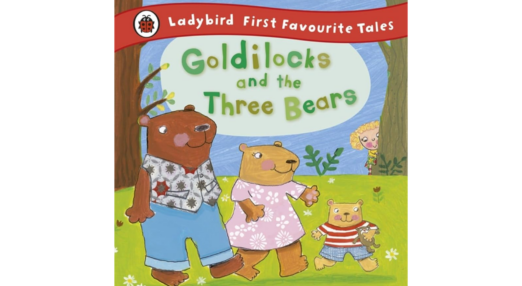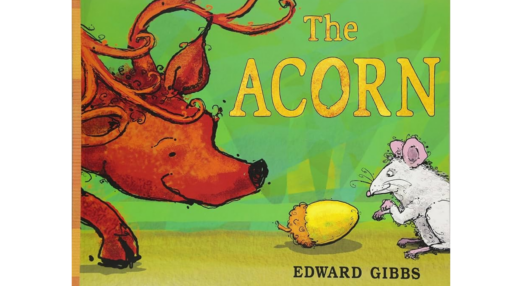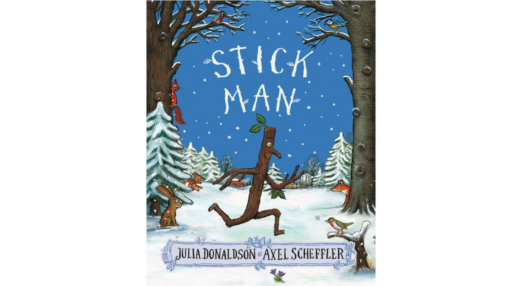Our Favourite Books for Woodland Learning
Our Education Officers have taken a break from running free woodland visits to come together and decide on their favourite books for inspiring imaginations and creativity when visiting a forest.
Classic Tales

The Three Little Pigs by Ronne Randall and Kasia Nowowiejska A tale that needs no introduction and which serves as a great stimulus for imaginative play and construction challenges in a woodland setting.

The Three Billy Goats Gruff by Mara Alperin and Kate Pankhurst One of my favourite forest sessions ever used this book as a stimulus. We explored the different areas in our forest that the goats might want to live in and then built bridges for them to escape over with the materials that we found around us. Endless opportunities for creativity, language development, problem solving, team work and most importantly, fun!

Little Red Riding Hood by Saviour Pirotta and Olivia Beckman Discover why Little Red Riding Hood shouldn’t have walked off alone in the deep dark forest, why she shouldn’t tell her address to strangers and about the friendly forester who saved her. Great for thinking about personal safety but also to introduce all of the different animals and plants that she might have encountered on her adventures.

Goldilocks and the Three Bears by Nicola Baxter and Ailie Busby Do bears really live in our forests? One of the things that we try to do through Teaching Trees is to address common misconceptions among children about forests, one of them being that bears live in them today! Discuss Goldilocks’ personal safety and sense of ethics, enjoy some porridge in the mud kitchen and make a new chair for baby bear using found objects. A perfect tale for forest play.
Animals and Minibeasts

A Little Bit of Winter by Paul Stewart and Chris Riddell Our favourite from the ever popular, “Rabbit and Hedgehog” series, this book takes us on a journey from Autumn through the Spring with our two characters. As Hedgehog prepares to go into hibernation he asks his friend Rabbit to save him “a little bit of winter” so he can know what it feels like. Beautifully illustrated and engaging without anthropomorphising, this book is a lovely introduction to the lives of woodland animals in winter.

Superworm by Julia Donaldson and Axel Scheffler A fantasy tale about the adventures of Superworm and all his minibeast friends as they defeat the evil plans of Wizard Lizard. A fun way of introducing the names of lots of different woodland minibeasts and endless possibilities for imaginative play in the forest.

Owl Babies by Martin Waddell and Patrick Benson A sensitive way to stimulate discussions in circle time while also learning about some beautiful but rarely seen woodland creatures.

The Gruffalo by Julia Donaldson and Axel Scheffler A modern classic needing no introduction, a tale which even the very youngest in the group can join in with through actions and well known refrains. A brilliant basis for all sorts of creative and literacy activities as well as a way of dispelling misconceptions on science. Who actually does live in the deep dark wood?
Conservation and Climate Change

The Lorax by Dr Seuss A poignant environmental message that is sadly even more relevant today than when it was first written in 1971. A much longer book than most on this list but the colourful fantasy world that it describes is engaging for all ages.

After the Storm (Percy the Park Keeper) by Nick Butterworth This is an ideal story for extending the interest of children in what they can see happening in the world around them and thinking about what impact the weather has on our woodland habitats.

The Great Paper Caper by Oliver Jeffers One for the crime investigators out there, join the woodland animals as they aim to find out where all their trees have gone. A creative way of looking at the theme of sustainability, deforestation and the woodland environment.

Apple Pigs by Ruth Orbach One of my favourite books from my childhood that I am now enjoying sharing with the next generation. Join the story of a little girl who decides to care for an unloved tree in her garden that then repays her kindness with a bumper harvest.
Sensory Exploration

Wow! Said the Owl by Tim Hopgood Join Baby Owl on an adventure as he stays up during the day to experience all of the ‘Wows’ in nature. Lots of opportunity for language development and creative play.

We’re Going on a Bear Hunt by Michael Rosen and Helen Oxenbury So many opportunities here for role play and sensory fun as you join the journey of a family on an adventure they may not have fully risk assessed through the woods! If its safe to do so where you are, why not take along some tuff trays and involve the children in some barefoot forest fun.

Stone Soup by Heather Forest and Susan Gaber This classical tale from European folklore brings us into the journey of two weary travellers who arrive at a village in the forest looking for somewhere to stay and something to eat. As the villagers attempt to turn them away they teach them the value of helping those that are less fortunate than themselves. A great stimulus for finding food in the forest to share, sensory play in the mud kitchen and shelter building to give the poor travellers somewhere to rest.
Trees and Forests

The Giving Tree by Shel Silverstein An innovative tale of the relationship between a young boy and a tree that follows their journey together as he grows into a man. Loads of possibilities from this book ranging from a literacy stimulus to tree maths. Why not encourage your children to work out the age of trees in your school grounds or local community and to think about what might have happened in the lifetime of that tree?

The Acorn by Edward Gibbs Join the story of a little acorn who grows into a mighty oak tree and provides food and shelter for the whole forest.

Where my Wellies take me by Michael Morpurgo, Clare Morpurgo and Olivia Lomenech Gill The only book of poetry to make the list, this beautifully put together anthology takes you through a childhood of adventures and discoveries in the fields and woodlands around their home.

Stick Man by Julia Donaldson and Axel Scheffler No list of woodland books would be complete without this modern classic. Join Stick Man on his journey as he attempts to get home to the family tree. Even when not using this book as a stimulus so many children will pick up a stick and say “Look its Stick Man”. A wonderful opportunity for creative story telling and role play as well as exploring all of the other uses for a stick!

Becky Wilkinson
Learning and Outreach Manager
After over a decade in the classroom, Becky retrained as a Forest School leader to take her love of working with children outside. She's now the RFS Learning and Outreach Manager with responsibility for all of our work relating to Education.

